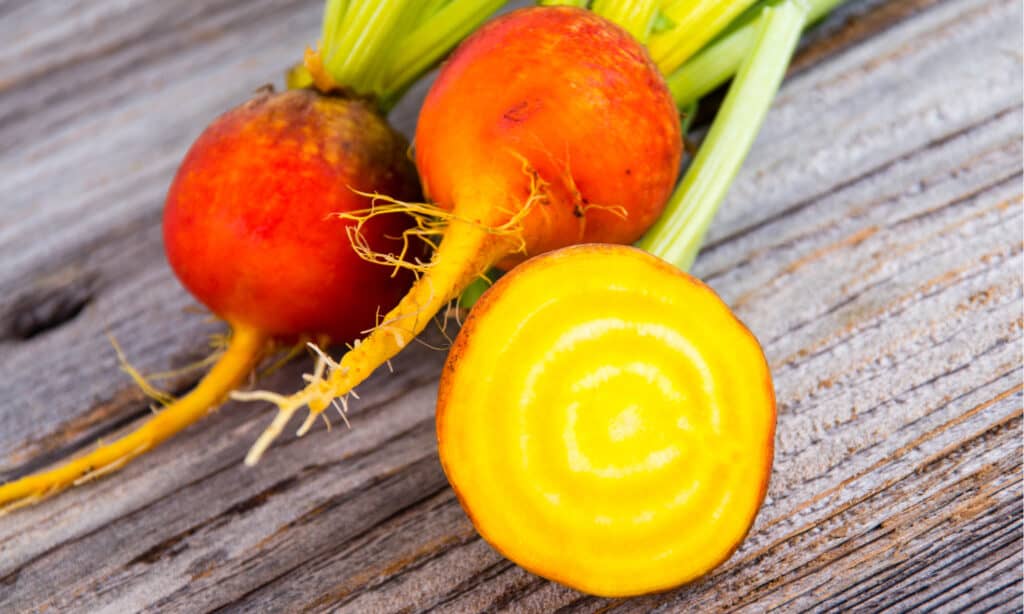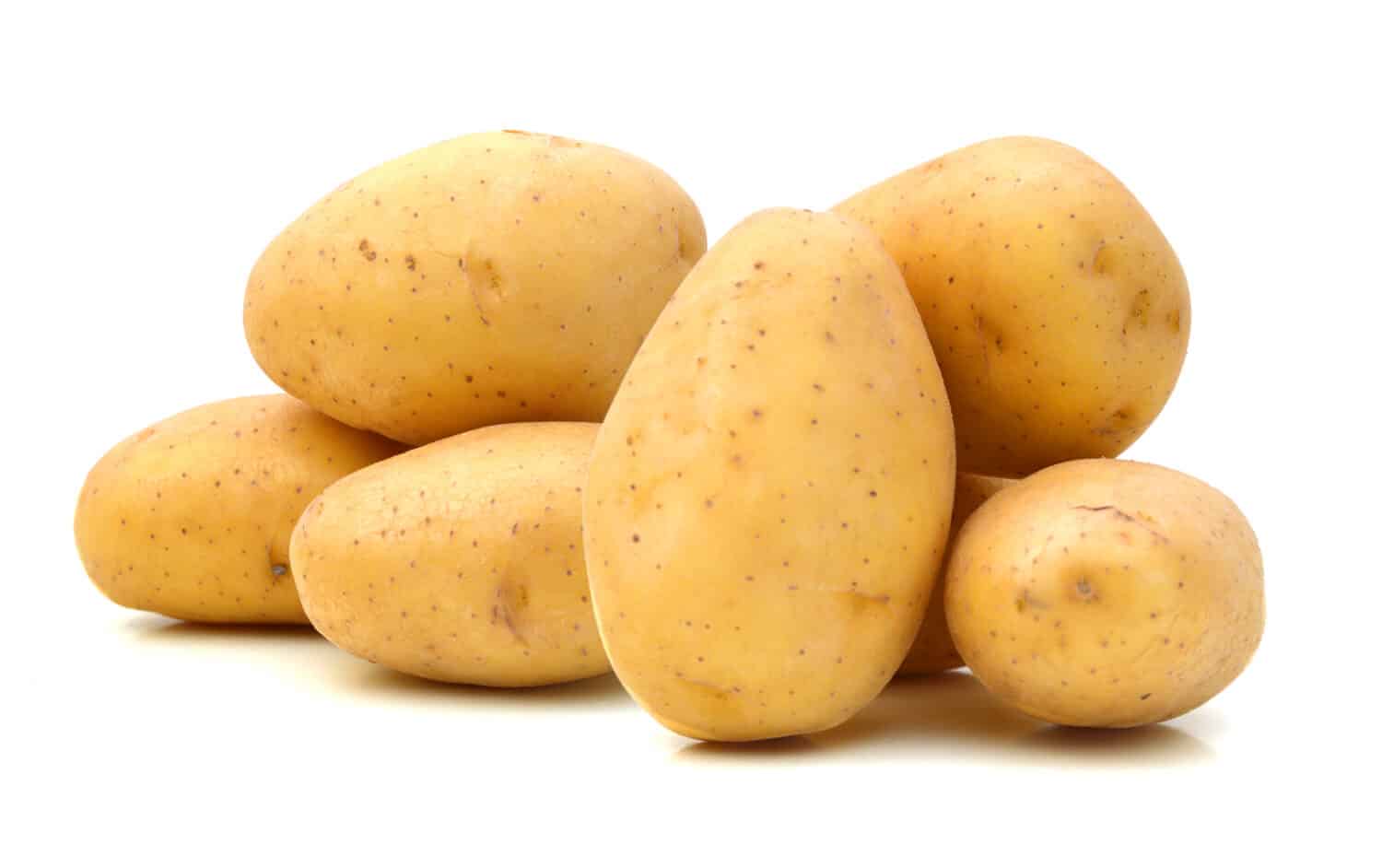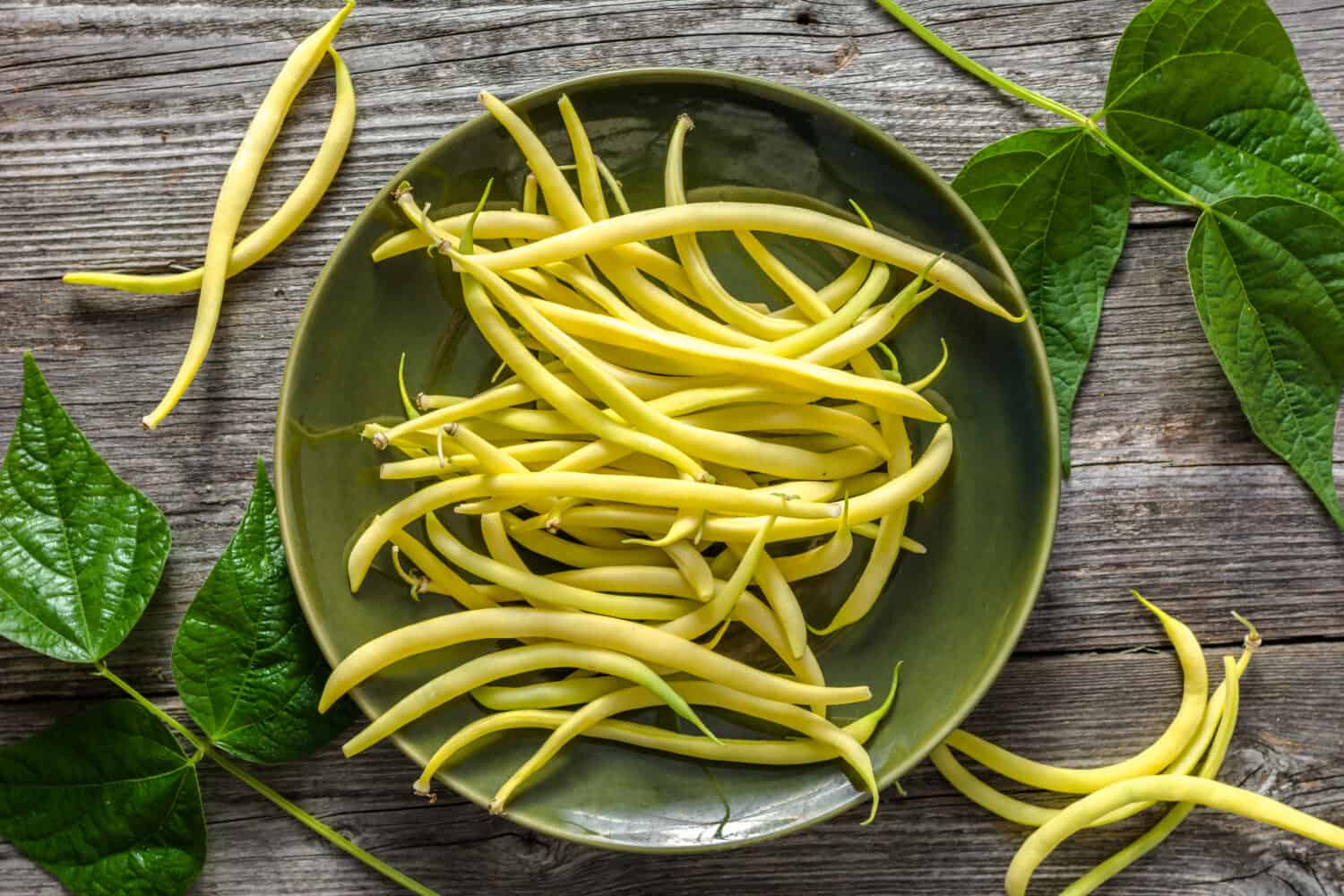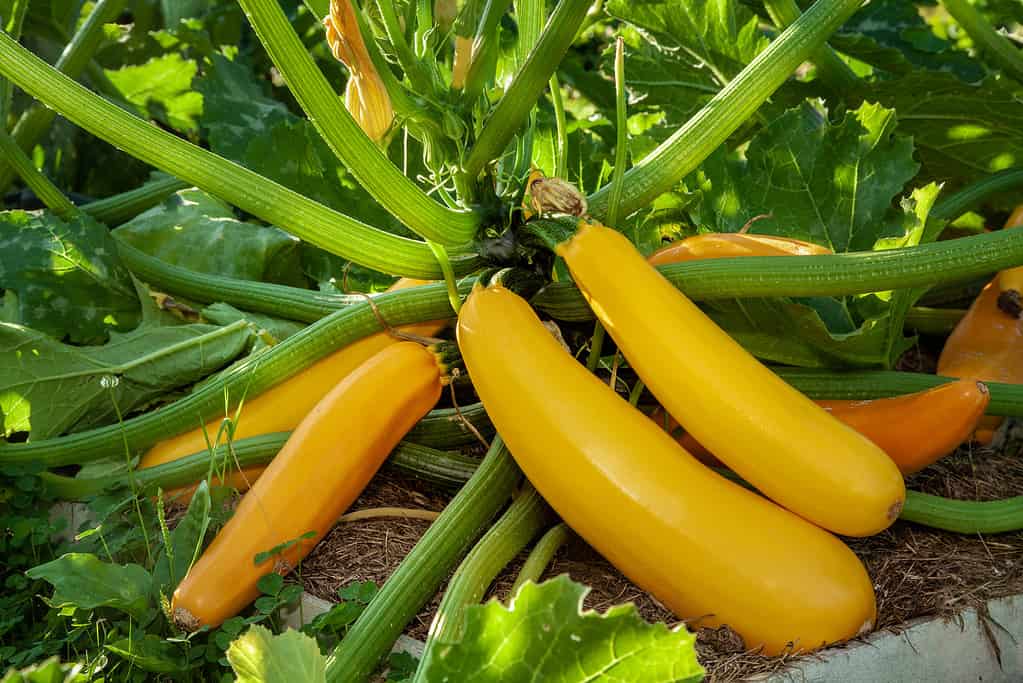Vegetables come in all shapes, sizes, and colors, including yellow! Check out this comprehensive list of ten yellow vegetables and learn about their health benefits and how to eat them.
Types of Yellow Vegetables
Corn

Corn contains fiber that helps you stay full longer. It is one of the most well-known yellow vegetables
©Photoongraphy/Shutterstock.com
Health Benefits: Corn is a great source of fiber that helps you stay full longer. It can also help protect against colon cancer, as it feeds healthy bacteria into your digestive system.
How to eat: You can eat corn straight off the cob. Or you can use kernels in guacamole, salsa, and relish.
Taste: Yellow corn is sweet and buttery with a crisp, clean bite
Yellow Onion

Yellow onions are great everyday onions used in many recipes
©nnattalli/Shutterstock.com
Health Benefits: This vegetable improves digestive health, keeps blood sugar levels in check, reduces the risk of Alzheimer’s, and has anti-inflammatory properties. It’s loaded with nutrients, is an excellent source of vitamin C, and can keep some cancers at bay.
How to eat: Yellow onions are a great everyday onion that can be used as toppings on sandwiches and salads. Or you can caramelize them and put them on burgers.
Taste: Mild and sweet
Golden Beet

Golden beets are mild and sweet
©julie deshaies/Shutterstock.com
Health Benefits: Golden beets are high in vitamin C and potassium, which can help with blood pressure, muscle function, and your immune system. They also have antioxidative properties that reduce inflammation.
How to eat: Use them raw in salads, pickle them, or sautee to use them in many recipes.
Taste: These beets are mild and sweet with a hint of nuttiness
Yellow Cauliflower

Yellow cauliflower is high in beta-carotene
©Pixel-Shot/Shutterstock.com
Health Benefits: Yellow cauliflower is higher in beta-carotene than the white variety, which supports eye health. They are also high in fiber, nutrients, and antioxidants.
How to eat: The best way to eat cauliflower is by roasting or sauteing it, which keeps its flavors intact and brings out its sweetness. You can also steam it, fry it, or pickle it.
Taste: Mild, creamy, and slightly sweet
Yellow Potato

Yellow potatoes taste great when roasted or mashed
©Hong Vo/Shutterstock.com
Health Benefits: Yellow potatoes are an excellent source of antioxidants, Vitamin C, Vitamin B6, and potassium. These vegetables can strengthen your immune system, heart, muscles, and nervous system.
How to eat: These potatoes are perfect when roasted with a little olive oil and salt. Or you can make mashed potatoes.
Taste: Rich, buttery, and slightly sweet
Wax Bean

Wax beans are mellow and crisp and go well in many side dishes
©alicja neumiler/Shutterstock.com
Health Benefits: Not only are wax beans low (almost nonexistent) in fat, sodium, and cholesterol, but they are also high in vitamin C, iron, and folate. These beans can reduce the chance of certain cancers and boost your immune system.
How to eat: You can eat them raw or steamed. Or you can use them in stews and soups. Toss them in garlic and fresh basil for a simple side dish.
Taste: Mellow and crisp with a slight grassy or nutty flavor
Yellow Carrot

Yellow carrots can lower your risk of cancer and balance blood sugar
©Food Impressions/Shutterstock.com
Health Benefits: Like regular orange carrots, yellow carrots contain beta-carotene and lutein, which reduces the risk of certain eye diseases. But they can also lower your risk of cancer and balance blood sugar.
How to eat: You can eat them raw for snacking or sliced in a salad. Or you can roast them, saute them, or use them in a variety of dishes. Throw them in a juicer and make healthy carrot juice.
Taste: Firm, earthy, and sweet
Yellow Vegetables That Are Technically Fruits
Yellow (Summer) Squash

Yellow squash is great is summer side dishes
©Zhukovskaya Elena/Shutterstock.com
Health Benefits: Yellow squash is an excellent source of Vitamins A, B6, and C. They are also high in folate, fiber, potassium, phosphorus, magnesium, and riboflavin. These vegetables keep your bones strong while helping your body process carbs and fat.
How to eat: There are many ways to eat squash, whether grilled, roasted, or sauteed. They make great side dishes or mix them with other ingredients.
Taste: Mild, sweet, and slightly watery
Yellow Bell Pepper

Yellow peppers are very high in vitamin C
©Alberto Masnovo/Shutterstock.com
Health Benefits: Yellow peppers are high in Vitamin C, Vitamin A, potassium, and folic acid. They help naturally detoxify the body, lower cholesterol, and lower blood pressure. They also have anti-aging properties.
How to eat: You can slice them and eat them raw, dipped in hummus or ranch. Or you can saute or grill them and make fajitas and other recipes.
Taste: Refreshing, subtle, and slightly sweet
Yellow Zucchini

Yellow zucchini is mild and slightly sweet
©bergamont/Shutterstock.com
Health Benefits: Yellow zucchini are plentiful in carotenoids that benefit your eyes, heart, and skin. These vegetables can also protect against some cancers.
How to eat: The best way to make yellow zucchini is by roasting, sauteing, or grilling. And they make the perfect side dish for any summer recipe.
Taste: Mild and slightly sweeter than green zucchini
A Recap of the Complete List of Yellow Vegetables
| Number | Yellow Vegetables |
|---|---|
| #1 | Corn |
| #2 | Yellow onion |
| #3 | Golden beet |
| #4 | Yellow Cauliflower |
| #5 | Yellow potato |
| #6 | Wax bean |
| #7 | Yellow carrot |
| #8 | Yellow squash |
| #9 | Yellow bell pepper |
| #10 | Yellow zucchini |
Thank you for reading! Have some feedback for us? Contact the AZ Animals editorial team.







